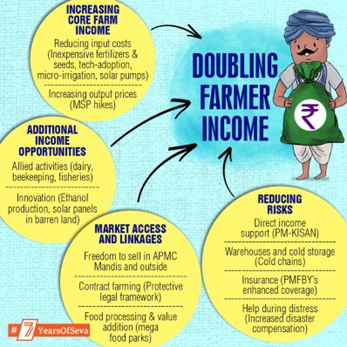Wednesday, 8th March 2023
Thumbs down for the ‘Adopt a Heritage’ scheme
Exam View: Indian Heritage, Adopt a Heritage scheme, benefits and concern, Corporate Social Responsibility,.
In News: Private firms, companies, and public sector units can enter into agreements with the Union Ministry of Culture to adopt and maintain State-owned archaeological sites or monuments.
About ‘Adopt a Heritage: Apni Dharohar, Apni Pehchaan’ scheme:
- It is an initiative of the Ministry of Tourism, Ministry of Culture and the Archaeological Survey of India (ASI) launched in September 2017 on World Tourism Day.
- Under the scheme, the government invites public sector companies, private sector firms as well as individuals, to develop selected monuments and heritage sites across India.
- Businesses may use their Corporate Social Responsibility (CSR) funds at select sites to construct and maintain ticket offices, restaurants, museums, interpretation centres, toilets, and walkways.The sites/monument are selected on the basis of tourist footfall and visibility and can be adopted by private and public sector companies and individuals, known as Monument Mitras, for an initial period of five years.
- The Monument Mitras are selected by the ‘oversight and vision committee’, on the basis of the bidder’s ‘vision’ for development of all amenities at the heritage site. There is no financial bid involved.
Concerns with the implementation of the scheme:
- Lack of expertise for adopting a site: Similar to the Morbi tragedy, where a watch company was permitted for upkeep of a colonial-era bridge, adoption of heritage by unrelated companies could lead to destruction of cultural significance of heritage.
- Sidelining the mandate of the ASI and abandoning ‘The Sarnath Initiative’ to safely keep excavated objects and present them to visitors in an engaging manner.
- Selection of monuments: Many monuments in the scheme such as Sanchi stupa, the Brihadeshwara temple in Thanjavur, and Akbar’s palace at Fatehpur Sikri already have tourist infrastructure.
- Exploitation of land around monuments: Under the scheme, businesses can occupy prime public land and build their own brands at the cost of further diminishing grounds around iconic monuments.
- Loss of antiquities due to new construction: The grounds around the monuments have possibility of discovery of antiquities that can offer clues into the historical context of monuments.
- Undermining the interests of local communities: Guided tours led by employees of large businesses may endanger livelihoods of those who have lived near the site and may also affect the relations of locals with the monument.
- Troubles due to monument’s illumination: Keeping these monuments open from dawn to dusk leads to limited footfall and thus preserved them from excessive wear and tear. Night tourism will also pull electricity away from rural homes and hospitals.
- Uncertainty about monuments not adopted: According to media reports, the UP government has started turning monuments not adopted in the predetermined time frame into hotels. .
Role of Corporates in Preserving National Heritage:
- Awareness generation: Businesses can help citizens understand why monuments matter by earmarking CSR funds for grants for researching, writing, and publishing high quality textbooks.
- Support to school libraries for collecting archival materials by small traders and shopkeepers that will lead students to establishing the value of monuments.
- Supporting underfunded humanities and social sciences departments at universities: Corporates can do this by instituting fellowships, endowing professorships, and supporting research training programs.
- Meaningful conservation of heritage buildings: The CSR funds of industrial houses can be used to purchase new equipment that releases fewer noxious gases.
- Skilling initiatives by corporates: In the past, Tata Sons, ONGC, and other companies have regularly contributed funds to create jobs for youths by re-skilling them in monument conservation.
- Promoting interdisciplinary teams trying to protect monuments from emergent threats such as climate change.
Source:
https://www.thehindu.com/opinion/lead/a-thumbs-down-for-the-adopt-a-heritage-scheme/article66564327.ece
Multilateral Reforms as a Priority in the G-20
In News
- India assumed G-20 presidency in December 2022 and stated multilateral reform as one of its top priorities.
- In this regard, Think 20 a G-20's idea bank has also placed multilateral reforms as one of its priorities.
- The T20 Task Force on ‘Towards Reformed Multilateralism’ (TF7) aims to construct a roadmap for ‘Multilateralism 2.0’.
- Multilateralism is an important tool for addressing global challenges and promoting international cooperation.
What is Multilateralism?
Multilateralism refers to the practice of cooperation and coordination between multiple countries and international organizations on issues of common interest or concern.
- Addressing global challenges: Many of the world's most pressing problems, such as climate change, poverty, and pandemics, require coordinated action among multiple countries and international organizations.
- Promoting peace and security: Multilateral cooperation can help prevent conflicts and promote peace and security by providing a forum for dialogue and diplomacy.
- Ensuring a level playing field: Multilateralism can help ensure that all countries, regardless of size or power, have an equal voice in shaping international rules and norms.
- Promoting economic growth and stability: Multilateral cooperation can facilitate trade and investment, which can promote economic growth and stability.
- Strengthening international institutions: It can help strengthen international institutions such as the United Nations, the World Trade Organization, and the World Health Organization, which play important roles in promoting global cooperation and addressing international challenges.
- Fostering cultural exchange: Multilateralism can also facilitate cultural exchange and understanding between different countries and promote the spread of ideas and values.
Challenges of multilateralism:
- Divergent national interests: Countries may have different priorities and interests, which can make it difficult to reach consensus on issues of global importance.
- Power imbalances: Some countries may have more influence than others due to factors such as their size, wealth, or military power leading to unequal bargaining power and undermine the effectiveness of multilateral cooperation.
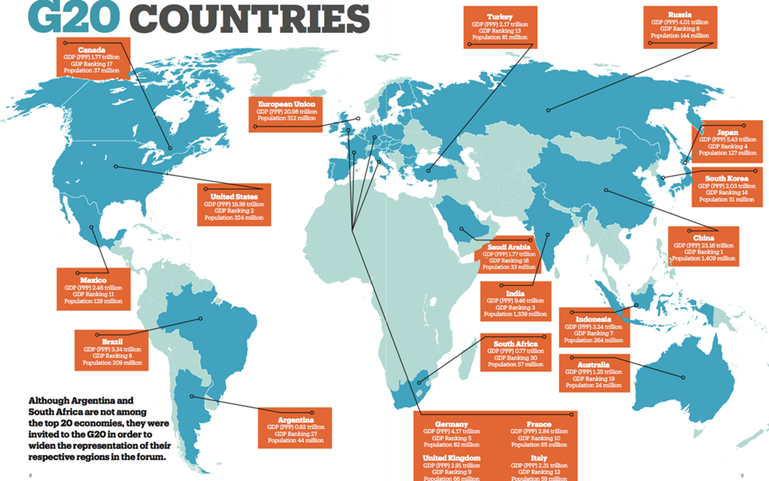
- Lack of trust: Countries may not trust each other, either due to historical conflicts or contemporary issues making it difficult to build consensus.
- Resource constraints: Multilateral cooperation often requires significant resources, including funding, personnel, and technical expertise which some cvountries may be unwilling or unable to commit the necessary resources.
- Coordination challenges: Multilateral cooperation involves coordinating actions and policies across different countries and organizations, which can be complex and time-consuming leading to delays and inefficiencies.
- Non-state actors: Multilateral cooperation is not limited to governments and international organizations and non-state actors, such as civil society organizations and multinational corporations, also play important roles.
- Lack of enforcement mechanisms: Multilateral agreements are typically not legally binding and lack effective enforcement mechanisms which can undermine compliance and make it difficult to hold countries accountable for their commitments.
Opportunities: G-20 and India
- G-20 needs to devise multiple solutions to fix the malaise within multilateralism and should focus on setting proper narratives of multilateral reform.
- India should urge upcoming chairs of the grouping, Brazil and South Africa, to place multilateral reforms as their presidential priorities.
- G-20 should continue encouraging minilateral groupings as a new form of multilateralism and transform them into multi-stakeholder partnerships.
- Member countries should put all its efforts into solving one or two pressing global issues and showcase it as the model of new multilateralism.
- G-20 should be more inclusive without sacrificing efficiency, including the African Union as a permanent member and the UN Secretary-General and General Assembly President as permanent invitees.
|
G20 |
|
https://www.thehindu.com/news/national/explained-multilateral-reforms-as-a-priority-in-the-g-20/article66588852.ece
India internal Migration - Edukemy Current Affairs
In News: A possible exodus of migrant workers from Tamil Nadu (TN) has raised concern after videos showed purported attacks on Hindi-speaking men.
About Migrant Workers in Tamil Nadu:
- Around a million migrants are estimated to work in TN, and industry bodies fear the state’s industrial and manufacturing sector would be severely impacted by the exodus.
- According to a PIB 2022 report, there are over 34.87 lakh migrant labourers in TN and of this 7.13 lakh are women.
- About half of the migrant workers are concentrated in northern TN cities namely Thiruvallur, Chennai & Chengalpattu, with remaining in Tirupur, Coimbatore & Erode
- Majority of migrants in TN are involved in dirty, dangerous, and demeaning jobs, which the locals do not prefer.
Migration Trends in India:
The government data on migration within the country is not comprehensive and, in many cases, old. Various sources for data on internal migrations are:
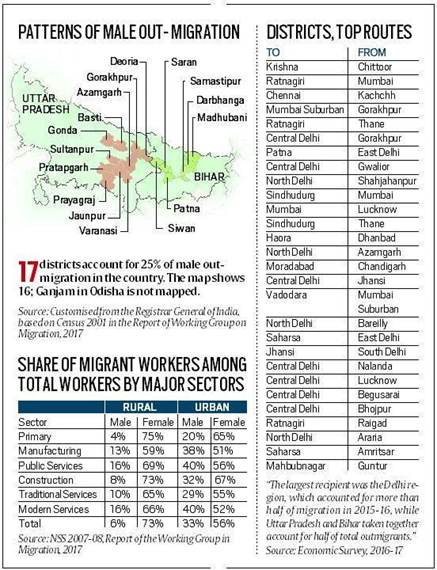
2011 census:
- Number of internal migrants in India at 36 crore, making up 37% of the country’s population.
Economic Survey 2016-17
- Highest influx of migrants within the country was in city-districts such as Gurugram, Delhi, and Mumbai; along with; Indore and Bhopal (MP); Bengaluru (Karnataka); and Thiruvallur, Chennai, and Coimbatore (TN).
Report of the Working Group on Migration, 2017
- 17 districts accounted for the top 25% of India’s total male out-migration. Ten of these districts are in UP, six in Bihar, and one in Odisha. (Check Infographic).
- Relatively less developed states such as Bihar and Uttar Pradesh have high net out-migration while relatively more developed states like Delhi, Maharashtra, Gujarat, Tamil Nadu reflecting net immigration:
- The largest recipient was the Delhi region, which accounted for more than half of migration in 2015-16, while Uttar Pradesh and Bihar together account for half of total out-migrants.
Migration in India 2020-21 by MoSPI
- It defines
- Temporary visitors are those who arrived in households after March 2020 & stayed continuously for a period of 15 days or more but less than 6 months.
- Migrants as those for whom the last usual place of residence any time in the past is different from the present place of enumeration.
- 7% of the country’s population was recorded as a ‘temporary visitor’ during the July 2020-June 2021 period.
|
|
Overall percentage |
Rural Areas (%) |
Urban Areas (%) |
|
Female Migration |
47.9 |
48 |
47.8 |
|
Male Migration |
10.7 |
5.9 |
22.5 |
- The all-India migration rate was 9% for July 2020-June 2021, with a 26.5% migration rate in rural areas and 34.9% in urban areas.
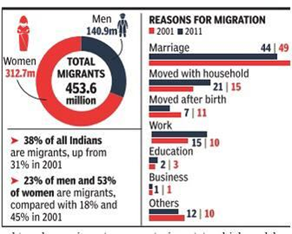
- Reasons for Migration:
- Over 84 % of 0.7 % temporary visitors moved due to pandemic, loss of job/lack of employment opportunities, closure of educational institutions and health-related reasons, and meeting family/ relatives/ friends.
- A total 48.9 % of temporary visitors moved to meet family/ relatives/ friends between July 2020 and June 2021, while 7 % moved for health-related reasons, and 12.2% due to loss of job/ closure of the unit.
- Among females, the highest level of migration rate was seen at 86.8 % for marriage.
- 6 % of males migrated to take up better employment/ proximity to place of work, or loss of job/ lack of employment opportunities.
Source:
https://indianexpress.com/article/explained/explained-economics/tamil-nadu-migrant-attack-india-numbers-explained-8482919/
6 Digit alphanumeric Hallmark Unique Identification Number (HUID)
In News:
After 31st March 2023, the Bureau of India Standards (BIS) will not allow the sale of hallmarked gold jewelry or gold artifacts without a 6-digit alphanumeric Hallmark Unique Identification Number (HUID).
- Hallmarked jewelry lying with consumers as per old schemes shall remain valid.
- Old hallmarked jewelry with 4 marks without HUID was also permitted to be sold by the jewelers along with the 6-digit HUID mark.
- Mandatory Hallmarking has been successfully implemented in 288 districts of the country with effect from 23 June 2021 by Hallmarking of Gold Jewellery and Gold Artefacts Order, 2022.
|
About Hallmarking |
|
How Hallmarking Works?

- A consumer can check and authenticate hallmarked gold jewelry items with an HUID number using ‘verify HUID’ in BIS CARE app .
- It provides information of the jeweler who got the article hallmarked, their registration number, purity of the article, type of article as well as details of the hallmarking centre which test and hallmark the article.
- Using this information, a common consumer can verify the article being purchased by matching it with article type as well as it’s purity.
https://pib.gov.in/PressReleaseIframePage.aspx?PRID=1904262#:~:text=It%20is%20further%20clarified%20that,traceability%20and%20assurance%20of%20quality.
SWAMIH Investment Fund - Edukemy Current Affairs
In News:
SWAMIH is India’s largest social impact fund specifically formed for completing stressed and stalled residential projects. This fund has completed 20,557 homes since inception in 2019.
 About
About
- SWAMIH is a government backed fund, set up as a Category-II Alternate Investment Fund debt fund registered with SEBI, launched in 2019.
- The Fund is sponsored by the Ministry of Finance and is managed by SBICAP Ventures Ltd.
- It aims to provide financing to enable completion of stalled housing projects and ensure delivery of apartments to homebuyers.
- It helps in increasing liquidity in the real estate sector and provide a boost to core industries such as cement and steel.
|
Alternative Investment Fund or AIF is any fund established in India which is a privately pooled investment vehicle that collects funds from sophisticated investors, both Indian or foreign, for investing. This fund can deploy its money in accordance with a defined investment policy for the benefit of its investors. |
https://pib.gov.in/PressReleaseIframePage.aspx?PRID=1904147
Muggers of Rapti - Edukemy Current Affairs
In News
Anthropogenic threats like illegal fishing and sand mining pose a threat to the mugger crocodiles (Crocodylus plaustris) of the Rapti river flowing along the Chitwan National Park (CNP) in south-central Nepal, contiguous to the Valmiki Tiger Reserve in Bihar.
About Mugger
- The mugger or marsh crocodile is one of the 24extant species of crocodilians found It is found India, Pakistan, Nepal and
- In Nepal, muggers are found in the Terai lowlandsnear the border with India. A study last year noted that the species has become extinct locally in many parts of Nepal due to habitat loss despite being protected by law.
Protection Status
- IUCN Red List: ‘Vulnerable’
- CITES: Appendix -I
|
Rapti River |
|
The Rapti originates in the Mahabharat Hills and lower range of the Himalayas and flows westward along the northern border of the CNP. The surveys were conducted along a 52 km river stretch from Jindagani Ghat (the eastern side) to Golaghat (Rapti-Narayani confluence) on the western side. |
https://www.downtoearth.org.in/news/wildlife-&-biodiversity/amp/muggers-of-rapti-anthropogenic-threats-pose-risk-to-saurians-in-nepal-s-chitwan-national-park-says-study-88081
International Big Cat Alliance (IBCA)
Why in news? India has proposed to launch a mega global alliance under its leadership to protect big cats and assured support over five years with guaranteed funding of $100 million.
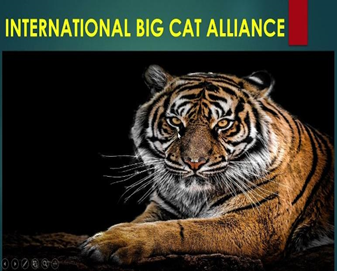
About:
- It is a proposed mega-global alliance that will work toward the protection and conservation of the seven major big cats — tiger, lion, leopard, snow leopard, puma, jaguar, and cheetah.
- Membership to the alliance will be open to 97 'range' countries, which contain the natural habitat of these big cats, as well as other interested nations, international organizations, etc.
- Aim: "dissemination of information on benchmarked practices, capacity building, resources repository, research and development, awareness creation, etc., on the preservation and conservation of big cats.
- Functions: "Advocacy, partnership, knowledge e-portal, capacity building, eco-tourism, partnerships amongst specialist groups, and fund tapping" will be some of its main activities.
- Governance Structure:
- A General Assembly consisting of all member countries.
- A Council of at least seven but not more than 15 member countries elected by the General Assembly for a term of 5 years, and a Secretariat.
- Upon the recommendation of the Council, the General Assembly will appoint the IBCA Secretary General for a specific term.
https://indianexpress.com/article/india/india-to-launch-global-alliance-for-big-cats-invest-100-mn-8482904/lite/
GN Ramachandran - Edukemy Current Affairs
Why in news? Department of Biochemistry, Vadodara, Gujarat organized an international conference in offline mode on “Celebrating Proteins on the Birth Centenary of Dr. G. N. Ramachandran (2023)”.

About:
- He was a pioneering scientist in the field of protein structure, who opened doors to the field of structural biology with his discovery of the structure of collagen and Ramachandran plots.
- In 1963, he published the Ramachandran plot, which thence after became an essential tool to assess the structures of proteins and other molecules.
- Ramachandran Plot provides inputs for understanding peptide structure/ Collagen Triple Helical model for collagen structure.
- He received the Shanti Swarup Bhatnagar Award for Physics in 1961 and the Ewald Prize from the International Union of Crystallography for his ‘outstanding contributions to crystallography’ in 1999.
https://pib.gov.in/PressReleasePage.aspx?PRID=1904206
Integrated Pensioners’ Portal - Edukemy Current Affairs
Why in news? The Department of Pension & Pensioners’ Welfare has decided that all the pension portals will be integrated into a single “Integrated Pensioners’ Portal”.

About:
- The new Pensioners’ Portal will integrate all 18 Pension disbursing banks portal, along with other portals like ANUBHAV, CPENGRAMS, CGHS etc, into one.
- The portal will act as a one-stop solution for all the pensioners’ needs and has been developed in collaboration with State Bank of India (SBI).
- After the complete integration, the retirees can choose a bank and branch for opening an online pension account, monitor their monthly pension slips, form 16, status of life certificate as well as change the bank disbursing pension through Bhavishya.
- The move will mitigate the problems faced by pensioners like change of bank, submission of life certificate, submission of death certificate, pension slip and retrieval of pension slip, income tax deduction data.
https://pib.gov.in/PressReleasePage.aspx?PRID=1904563
Real-time Train Tracking - Edukemy Current Affairs
Why in news? Indian Railways ties up with ISRO for real-time train tracking.
About:
- It has commenced a project, which will now enable real-time tracking of train movements with the assistance of satellite imagery under the Real Time Train Information System (RTIS) project.
- ISRO has developed its own regional navigation satellite system called Navigation with Indian Constellation (NavIC) and Bhuvan, a web-based utility which allows users to explore a set of map-based content being deployed for tracking.

Benefits:
- Real-time tracking of trains is useful during accidents, floods and landslides when there is a need to pin down the train’s exact location for rendering help.
- On-time services.
https://www.thehindu.com/news/national/indian-railways-ties-up-with-isro-for-real-time-train-tracking/article66587945.ece
Lewis superacids - Edukemy Current Affairs
Why in news? Researchers at Paderborn University, Germany have reported being able to make a unique class of catalysts – used in chemistry to accelerate reactions – called “Lewis super-acids”.

About:
- Named after the chemist, G N Lewis, Lewis super-acids derive from Lewis acids.
- A Lewis acid is any substance, such as a Hydrogen ion (H+) that can accept a pair of nonbonding electrons.
- In other words, a Lewis acid is an electron-pair acceptor.
- A Lewis base is any substance, such as the OH- ion, that can donate a pair of nonbonding electrons. A Lewis base is therefore an electron-pair donor.
- Because Lewis acids add electron pairs, they are often used to speed up chemical reactions.
- Lewis superacids are stronger than antimony pentafluoride -- the strongest Lewis acid -- and can break even the toughest bond
- Because they are so reactive, they are hard to manufacture.
- Being able to make these super acids, enables non-biodegradable fluorinated hydrocarbons, similar to Teflon, and possibly even climate-damaging greenhouse gases, such as sulphur hexafluoride, to be converted back into sustainable chemicals.
https://www.thehindu.com/sci-tech/science/what-are-lewis-super-acids/article66566719.ece#:~:text=Because%20Lewis%20acids%20add%20electron,bonds%20requires%20highly%20reactive%20substances
Disease Caused by proximity to pigeon
Why in news? Recently Thane Municipal Corporation (TMC) in Maharashtra warned people against feeding pigeons.
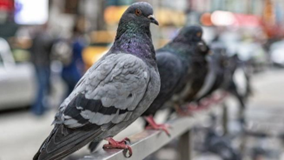
About:
- Pigeons may lead to various kinds of lung diseases, ranging from respiratory allergies to serious infections.
- Severe cases may lead to Pneumonia-Psittacosis, which is a bacterial infection.
- Hypersensitive pneumonia (a lung disease which is contracted by living near pigeons) (also known as Pigeon Breeder’s Disease)
- Histoplasmosis (fungal infection with high mortality rates)
- Cryptococcal infections (it may lead to pulmonary or meningeal infections)
- Mode of transmission: The breathable antigen arising from the bird droppings and feathers goes into the lung and leads to an immunological reaction, which damages the lung.
https://indianexpress.com/article/explained/explained-health/thane-warning-feeding-pigeons-disease-humans-8481304/#:~:text=Recently%2C%20the%20Thane%20Municipal%20Corporation,contracted%20by%20living%20near%20pigeons
Share the article
Get Latest Updates on Offers, Event dates, and free Mentorship sessions.

Get in touch with our Expert Academic Counsellors 👋
FAQs
UPSC Daily Current Affairs focuses on learning current events on a daily basis. An aspirant needs to study regular and updated information about current events, news, and relevant topics that are important for UPSC aspirants. It covers national and international affairs, government policies, socio-economic issues, science and technology advancements, and more.
UPSC Daily Current Affairs provides aspirants with a concise and comprehensive overview of the latest happenings and developments across various fields. It helps aspirants stay updated with current affairs and provides them with valuable insights and analysis, which are essential for answering questions in the UPSC examinations. It enhances their knowledge, analytical skills, and ability to connect current affairs with the UPSC syllabus.
UPSC Daily Current Affairs covers a wide range of topics, including politics, economics, science and technology, environment, social issues, governance, international relations, and more. It offers news summaries, in-depth analyses, editorials, opinion pieces, and relevant study materials. It also provides practice questions and quizzes to help aspirants test their understanding of current affairs.
Edukemy's UPSC Daily Current Affairs can be accessed through:
- UPSC Daily Current Affairs can be accessed through Current Affairs tab at the top of the Main Page of Edukemy.
- Edukemy Mobile app: The Daily Current Affairs can also be access through Edukemy Mobile App.
- Social media: Follow Edukemy’s official social media accounts or pages that provide UPSC Daily Current Affairs updates, including Facebook, Twitter, or Telegram channels.

